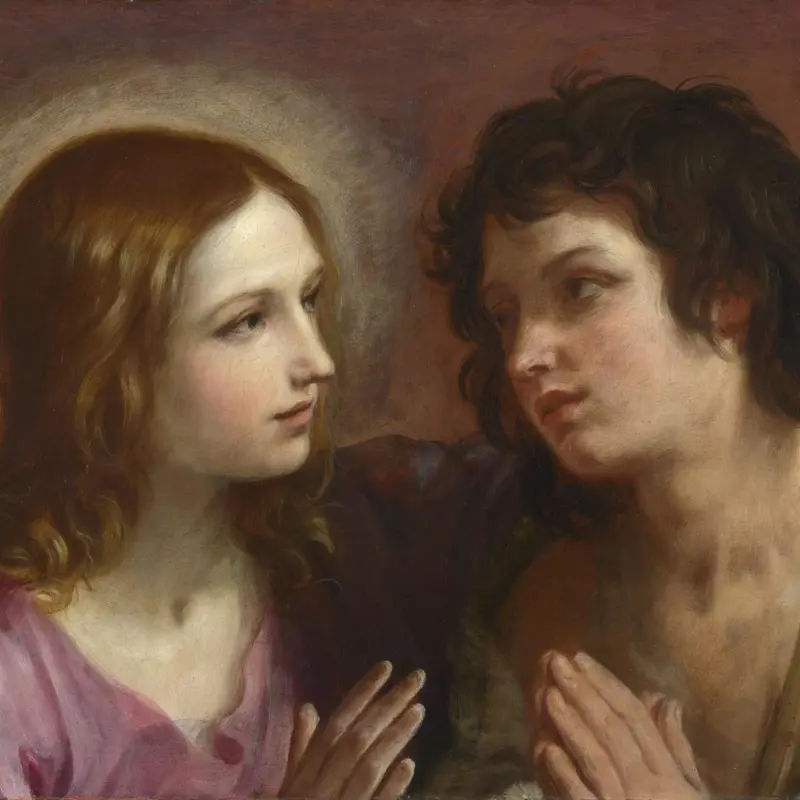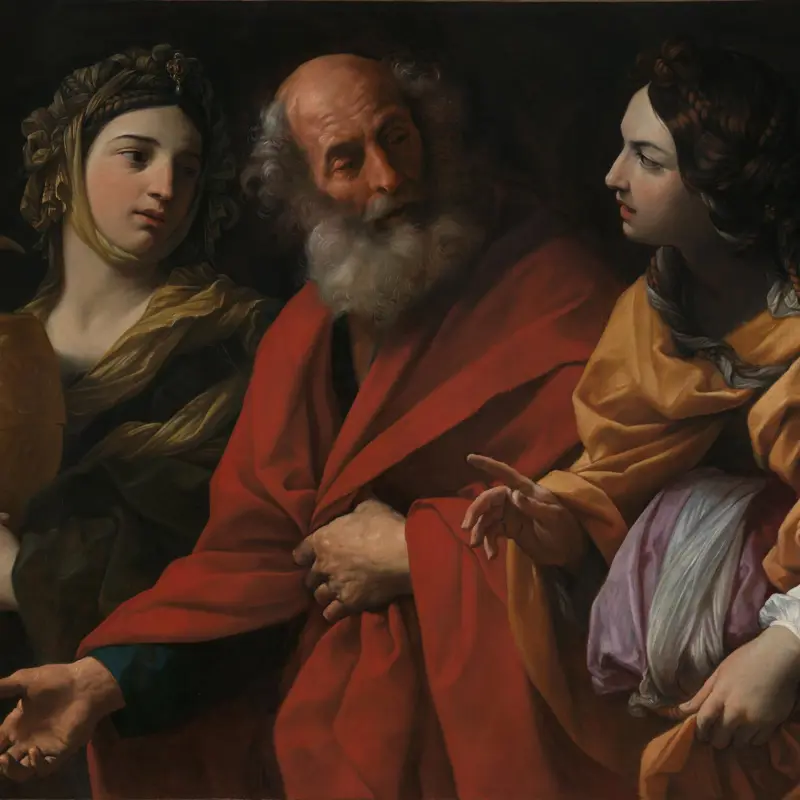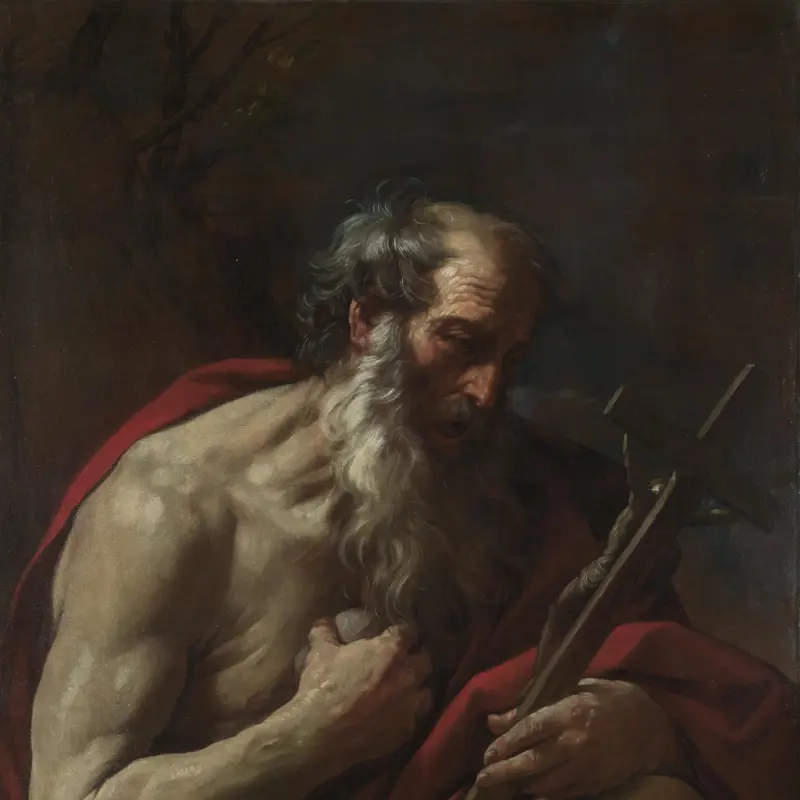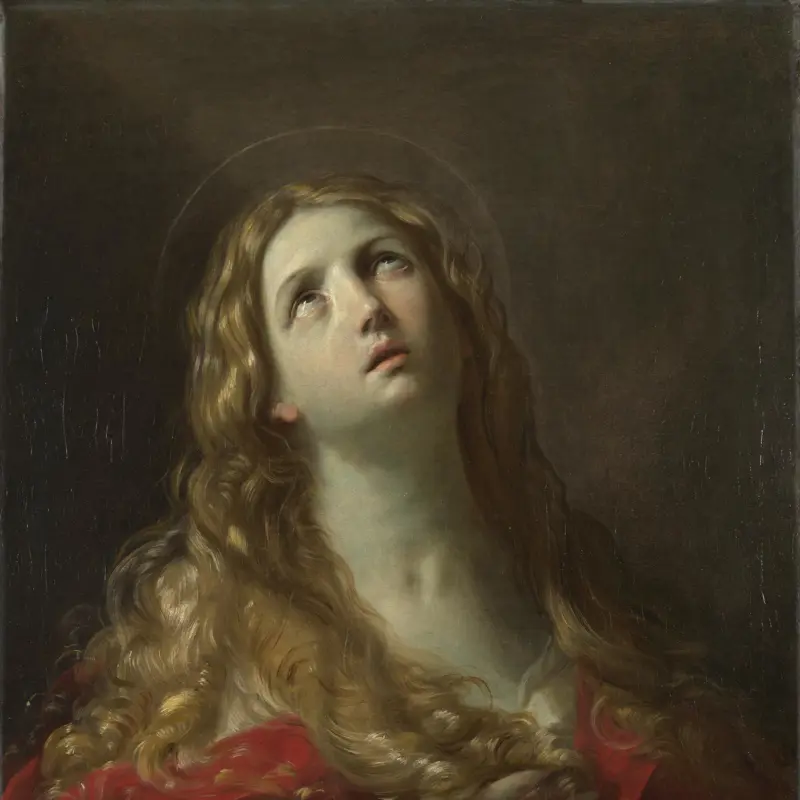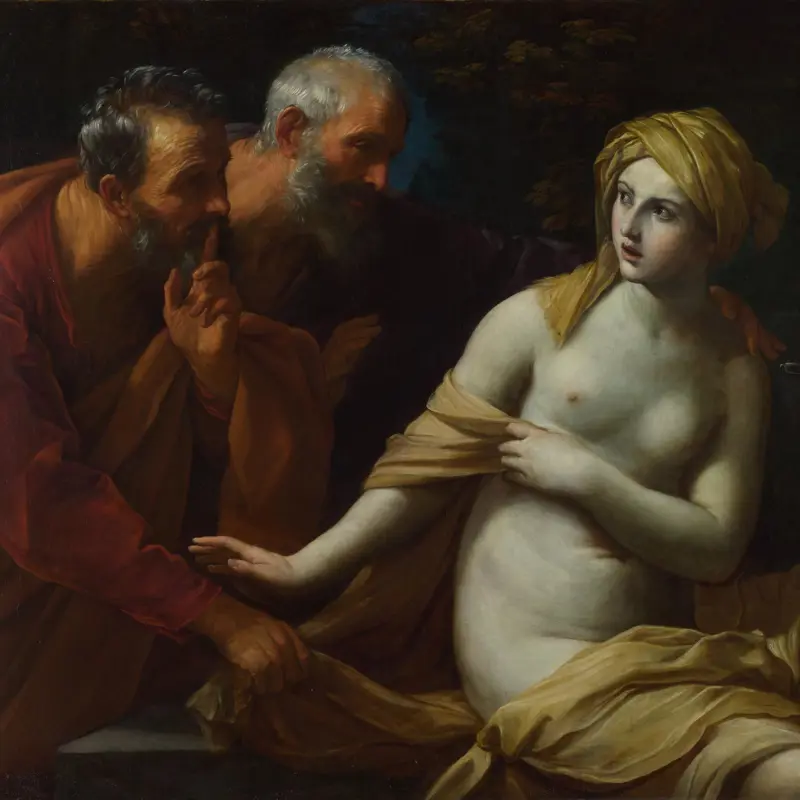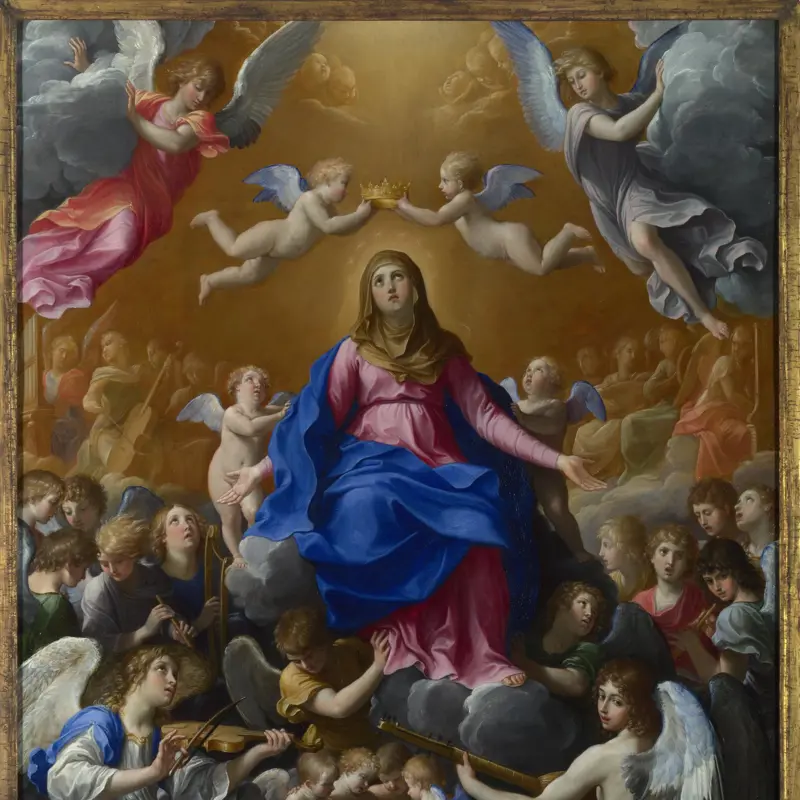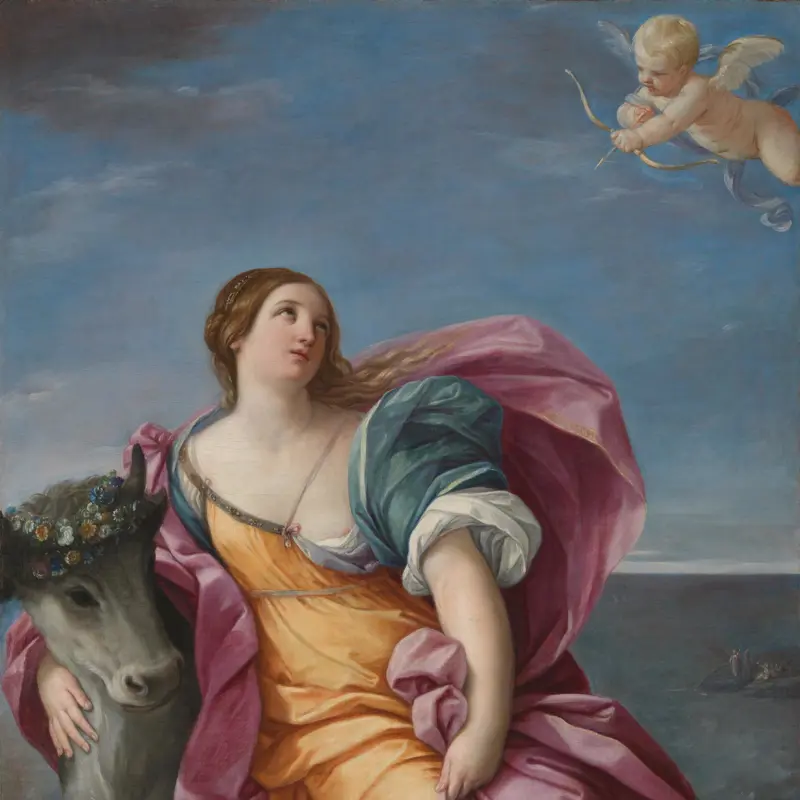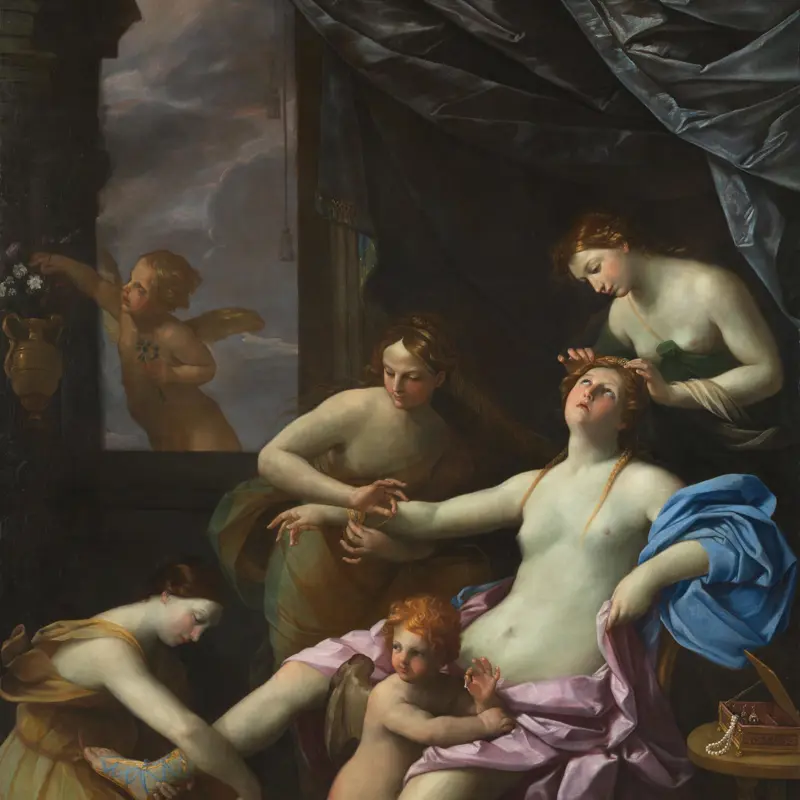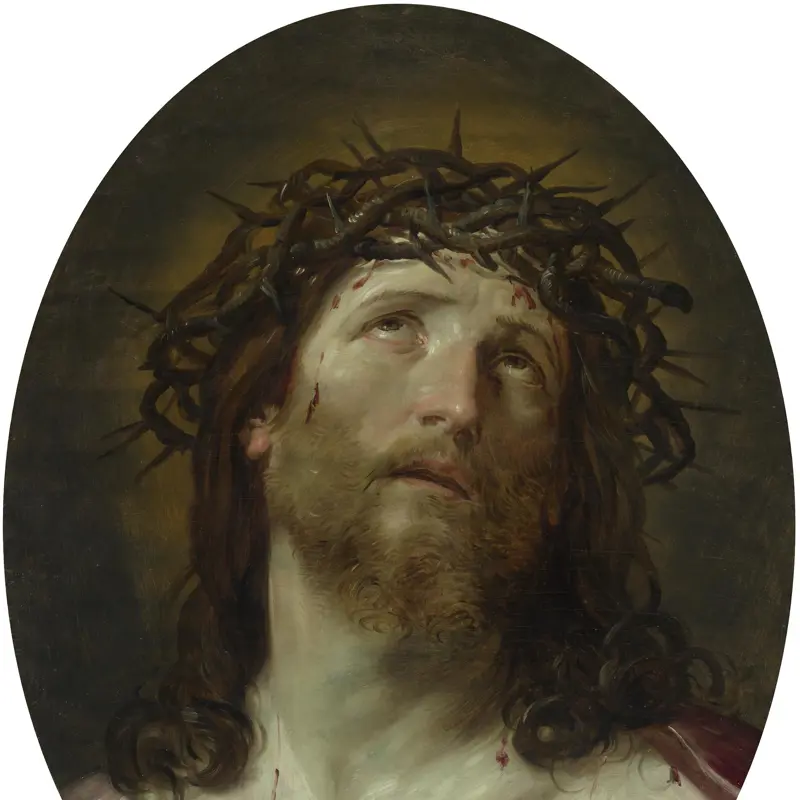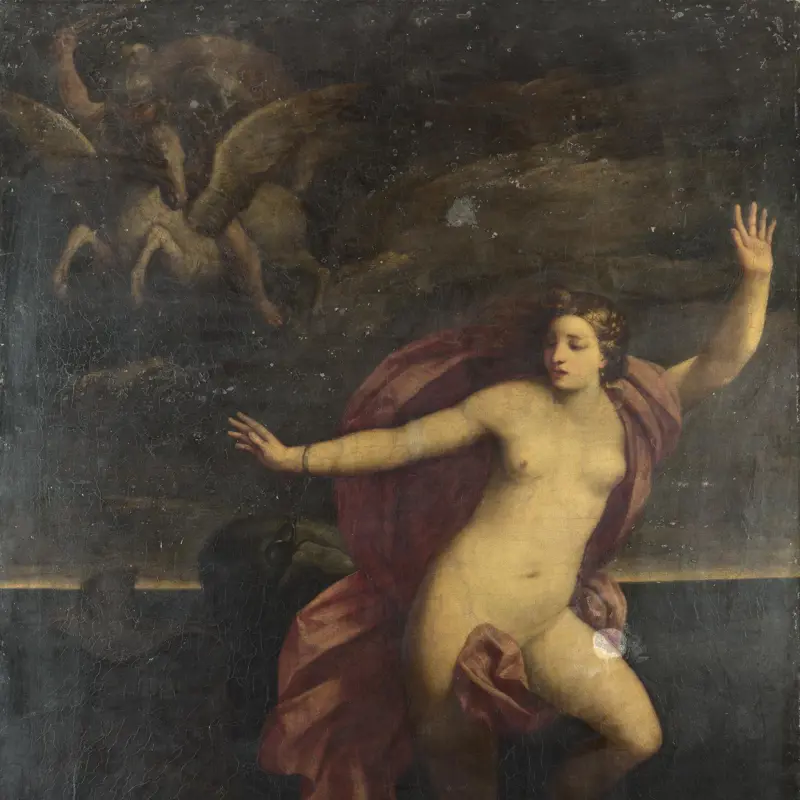Guido Reni, 'The Adoration of the Shepherds', about 1640
About the work
Overview
The Adoration of the Shepherds is a late altarpiece by Guido Reni. Nearly five metres high without its frame, it is one of the largest paintings in the National Gallery’s collection.
In a stable in Bethlehem, a group of shepherds gather around the newborn Christ. Reni has staged a night-time scene, using the darkness to full effect by surrounding the Christ Child with an otherworldly glow that illuminates the faces of those around him; they gaze upon his manger with awe and devotion. Celestial light seems to spill from the heavens through a gap in the clouds, and a group of joyful putti carry a scroll that reads: GLORIA IN ECCELSIS DEO (‘Glory to God in the highest’).
This work was completed in Reni’s final years and was owned by Prince Karl Eusebius von Liechtenstein (1611–1684), who may have commissioned it or acquired it from Reni’s studio following the dispersal of its contents after the artist’s death.
Key facts
Details
- Full title
- The Adoration of the Shepherds
- Artist
- Guido Reni
- Artist dates
- 1575 - 1642
- Date made
- about 1640
- Medium and support
- oil on canvas
- Dimensions
- 480 × 321 cm
- Acquisition credit
- Bought, 1957
- Inventory number
- NG6270
- Location
- Room 32
- Collection
- Main Collection
- Frame
- 19th-century English Frame
Provenance
Additional information
Text extracted from the ‘Provenance’ section of the catalogue entry in Michael Levey, ‘National Gallery Catalogues: The Seventeenth and Eighteenth Century Italian Schools’, London 1986; for further information, see the full catalogue entry.
Bibliography
-
1678C.C. Malvasia, Felsina pittrice: Vite de' pittori bolognesi, Bologna 1678
-
1767V. Fanti, Descrizzione completa di tutto ciò che ritrovasi nella galleria di pittura e scultura di sua altezza Giuseppe Wenceslao del S.R.I., principe regnante della casa di Lichtenstein […], Vienna 1767
-
1780Fürstlich Liechtensteinsche Gemäldegalerie, Description des tableaux et des pièces de sculpture que renferme la gallerie de S. A. François Joseph Chef et prince régnant de la maison de Liechtenstein, Vienna 1780
-
1866G.F. Waagen, Die vornehmsten Kunstdenkmäler in Wien, trans. E. Eastlake, Vienna 1866
-
1908K. Höss, Fürst Johann II von Liechtenstein und die bildende Kunst, Vienna 1908
-
1910M. von Boehn, Guido Reni, Leipzig 1910
-
1913E.M. Arndt, Wien, ed. R.F. Arnold, Wien 1913
-
1927W.J. Knoch, English Guide to the Prince Liechtenstein's Gallery, Vienna, Vienna 1927
-
1927A. Kronfeld, Führer durch die Fürstlich Liechtensteinsche Gemäldegalerie in Wien, Vienna 1927
-
1937O. Kurz, 'Guido Reni', Jahrbuch der Kunsthistorischen Sammlungen in Wien, II, 1937, pp. 189-220
-
1938A. Stix and E.V. Strohmer, Die Fürstlich Liechtensteinsche Gemäldegalerie in Wien, Vienna 1938
-
1942G.P. Bellori, Le vite inedite del G. P. Bellori: Vite di Guido Reni, Andrea Sacchi, e Carlo Maratti, ed. M. Piacentini, Rome 1942
-
1955C. Gnudi and G.C. Cavalli, Guido Reni, Florence 1955
-
1958The National Gallery, The National Gallery: July 1956 - June 1958, London 1958
-
1958'Editorial: A Guido Reni for the National Gallery', The Burlington Magazine, C, 1958, pp. 39-40
-
1971E. Baccheschi, L'opera completa di Guido Reni, Milan 1971
-
1971M. Levey, The Seventeenth and Eighteenth Century Italian Schools, London 1971
-
1981V. Birke, Guido Reni Zeichnungen (exh. cat. Albertina, 14 May - 5 July 1981), Vienna 1981
-
1984D.S. Pepper, Guido Reni: A Complete Catalogue of His Works, Oxford 1984
-
1986Levey, Michael, National Gallery Catalogues: The Seventeenth and Eighteenth Century Italian Schools, London 1986
-
1988D.S. Pepper, Guido Reni: L'opera completa, Novara 1988
-
1988V. Birke and B. Dossi, Guido Reni und der Reproduktionsstich, (exh. cat. Albertina, 15 September - 13 November 1988), Vienna 1988
-
2001
C. Baker and T. Henry, The National Gallery: Complete Illustrated Catalogue, London 2001
About this record
If you know more about this work or have spotted an error, please contact us. Please note that exhibition histories are listed from 2009 onwards. Bibliographies may not be complete; more comprehensive information is available in the National Gallery Library.

